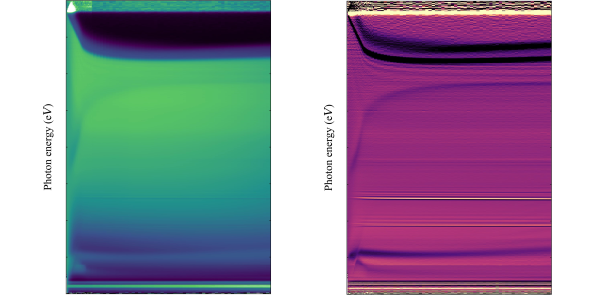The semi-metal that wasn’t there
By Nicola Nosengo - NCCR MARVEL
Weyl semimetals are highly sought after by material scientists. First predicted in the early 2010s, they belong to the class of topological materials that owe their unique transport, optical and thermoelectric behavior to distinct geometric and topological features, rather than to their chemical composition. What sets Weyl semimetals apart is that their electrons behave as if they are massless due to the presence of nodes in the electronic band structure, leading to unusual and interesting properties.
Scientists have been looking for real-world examples of these materials for quite some time now. Among those is – or better: was – a compound of europium, cadmium and arsenic, EuCd2As2, that computational studies based on density functional theory (DFT) calculations as well as several experimental studies had described as a magnetic Weyl semimetal.
“The reason for the excitement was that, according to the calculations, it should be possible to manipulate the topological properties of this material using a small magnetic field,” says Ana Akrap, MARVEL member and professor at the University of Fribourg. “The idea is that you have two bands [in the material] and nothing special happens when they’re spaced apart, but when you apply a magnetic field, they are pulled one on top of the other and that creates a Weyl semimetal. The overarching idea is using magnetism to control topology, which would be a big deal”.
But in a new study just published in Physical Review Letters, an international research team led by Akrap has studied this material in unprecedented details, eventually finding out that it is a magnetic semiconductor - still a very interesting material, but not one of the coveted semimetals.
And yet, “there are about 30 papers in the literature, both theoretical and experimental, that said that this was a Weyl semimetal, and the key message is that we should all be a bit more careful,” says Akrap.

Color plots of relative magnetotransmission for EuCd2AS2
To perform their experiments, the team has managed to synthesize high quality samples of EuCd2As2 both in a metallic form and – for the first time ever – as insulating crystals. The ability to manufacture very clean samples allowed to measure the magnetic and electric behavior of the material much more accurately than in previous studies. “The recipe used by our crystal grower to distil the sample was indeed very peculiar,” Akrap explains, “basically doing a crystallization first, and then using this tiny crystal as a seed for the next synthesis. But the main thing was that we started with clean materials, in particular buying extremely pure europium which is not easy to find”.
The team then applied a mix of techniques - including electronic transport, optical spectroscopy and excited-state photoemission spectroscopy – to measure the material’s behavior at various temperatures and under an external magnetic field up to 16 T. The conclusion was that the compound behaves as a magnetic semiconductor, thus combining antiferromagnetic behavior with electrical conductivity that is intermediate between a conductor and an insulator, with a band gap of 0.77 eV. And while it’s true that applying an external magnetic field has a strong impact on its behavior, in particular decreasing the band gap by about 125 meV, the material continues to behave as a semiconductor even under a strong magnetic field, with no sign of the transition to a Weyl semimetal.
How could so many studies get EuCd2As2 so wrong? Akrap points out that one of the main reasons is that europium has electrons in the f orbitals, and these electrons are notoriously difficult for DFT to simulate. “It’s a well-known problem, and in MARVEL there are people who know how to deal with it, so hopefully we’ll be making progress”.
But on the positive side, says Akrap, “this study shows the power of optical spectroscopy, a technique that can really show what a material is. Optics used to be more important in the past and it should reclaim its space. We now rely a lot on angle-resolved photoemission spectroscopy (ARPES), which is a wonderful technique because it shows band structure directly but has disadvantages. It only shows the states that are occupied, not the free ones. In optics you do see them. In general, over reliance on specific techniques is an issue that should be addressed”.
Reference
D. Santos-Cottin, I. Mohelský, J. Wyzula, F. Le Mardelé, I. Kapon, S. Nasrallah, N. Barišić, I. Živković, J. R. Soh, F. Guo, K. Rigaux, M. Puppin, J. H. Dil, B. Gudac, Z. Rukelj, M. Novak, A. B. Kuzmenko, C. C. Homes, Tomasz Dietl, M. Orlita, and Ana Akrap, "EuCd2As2: A Magnetic Semiconductor". Physical Review Letters (2023). DOI: https://doi.org/10.1103/PhysRevLett.131.186704
Low-volume newsletters, targeted to the scientific and industrial communities.
Subscribe to our newsletter